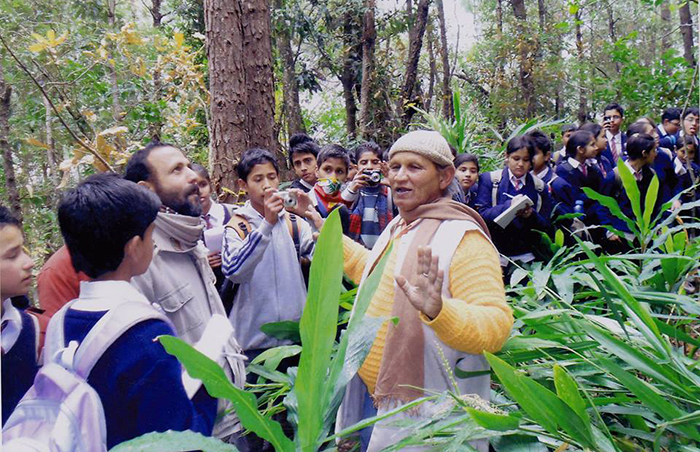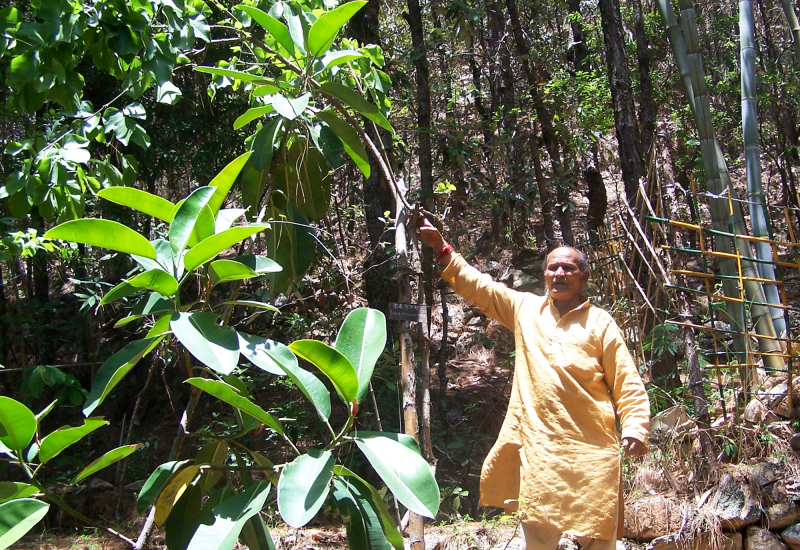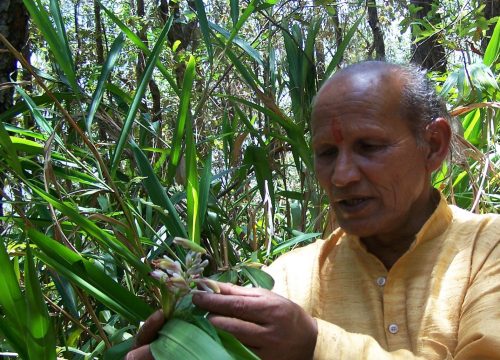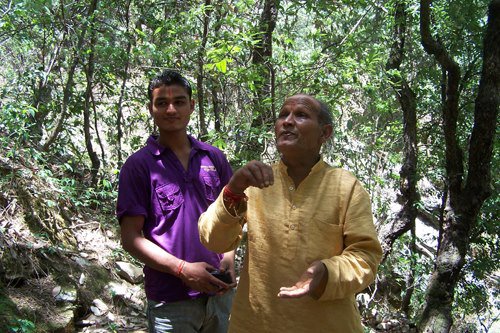This Ex-Soldier Single-handedly Transformed a Wasteland Into a Lush Forest in Uttarakhand
Back in 1973, it was a patch of barren land strewn with rocks. Today, it is a thriving 1.5 hectare agro-forest, thanks to an incredible effort by ex-soldier Jagat ‘Jungli’ Singh Chaudhary.

“Jungli, guardian of the forests”. Though it may sound like a character out of a Rudyard Kipling book, this Jungli is for real. Jagat Singh Chaudhary, an ex-BSF soldier from Rudra Prayag in Uttarakhand, was bestowed this unusual moniker at an environmental seminar in 1993 for having transformed 1.5 hectares of barren wasteland into a thriving agro-forest.
Working tirelessly for over 40 years, Chaudhary used his own resources, hard work and ingenuity to usher in positive change. Here’s the story of this inspiring one-man army.

It all started in 1973 when Chaudhary, then a BSF soldier, returned home to his native village of Kot Malla for a vacation. One evening, he got the news that a village woman had fallen down the mountain while trekking to collect fodder and died of fatal injuries.
The tragic demise kept Chaudhary up all night. He realised that the tragedy wasn’t anything new for Kot Malla and its surrounding villages, with the local womenfolk having to hike to treacherous heights to gather fodder and fuel wood. The reason? Years of deforestation and degeneration of forests around the villages.
Moved by this plight, the young soldier spent the rest of his leave finding ways to reduce the drudgery that was part of every local woman’s daily routine. Chaudhary had inherited a straggly, rock-strewn patch of land from his father and he decided to use it to cultivate plants that would provide food, fodder and fuel.
He began by clearing the barren area of weeds and rocks. Since no water was available near the land, he would carry water pots on his shoulders for 3 km daily to irrigate the land. He continued developing the forest whenever he came home during breaks from his job.

In 1980, Chaudhary retired from the BSF and began devoting all his time to developing the forest. Using the money from his pension, he planted around 56 species of trees on the land. This included conifers (like deodar and oak) and indigenous grasses (like namcha and teliya) to flowers, climbers and rare medicinal herbs. He also planted patches of vegetables, tubers, pulses and spices to help the local earn a livelihood by selling them and the honey harvested from the forest.
Under Chaudhary’s careful nurturing and protection, a beautiful agroforest soon spread over the land, breathing life into it. Other than improving the microclimate and augmenting the water table of the area, the forest also solved the problem of the village women going on long, arduous treks to collect fuel wood and fodder.
Interestingly, in stark contrast to the monoculture pine plantations of the forest department in the region, Chaudhary’s forest teemed with wildlife thanks to its thriving biodiversity. In his forest, species as diverse as like oak, betel, olive and cane (not grown elsewhere in Uttarakhand) all grow together!

Inspired by Chaudhary’s dedication and unbridled enthusiasm for the project, many villagers joined the effort or started similar projects of their own. Following the example set by the retired soldier, they introduced mixed agroforestry on their land, which enhanced the incomes of families while restoring ecological balance to the region.
Nearly two decades after Chaudhary began working on his land, in 1993, IAS officer R.S. Tolia surveyed ‘Jungli’s jungle’. Impressed by the impact he saw, Tolia issued a circular recommending that it become the model of agroforestry followed by the whole of Uttarakhand. Chaudhary began being invited to deliver lectures at schools and colleges. Many accolades, including the ‘Him Gaurav’, the ‘Indira Gandhi Vrikshmitra’ and the ‘Pariyavaran Premi’ awards, followed soon.
In 2002, Chaudhary was felicitated by the Governor of Uttarakhand for his outstanding work in the field of nature conservation. However, the humble ex-soldier decided to gift the entire reward amount to the unemployed youth of his village. In 2007, he was invited by HNB Garhwal University in Srinagar to develop a model agroforest on the campus. He completed the project successfully in 2010.

Over the years, Chaudhary has continued working towards creating a healthy, well-functioning ecosystem that boosts the local economy. Other than distributing seeds and saplings free of cost, he also teaches alternative farming methods (like vermiculture, bee keeping, bamboo cultivation and rabbit farming) to the locals.
He has designed a novel way of making manure by digging pits on land (which he calls the ‘pit technology’). Understanding the need to cut down on the need for fuel wood, he also campaigns for subsidies on cooking fuel.
Now a spry 70-year-old, Chaudhary has no plans of giving up his exemplary work anytime soon. His son, Dev, has a degree in environmental science and has joined hands with his father to work towards ensuring a greener and better future for all.
You May Like: A Group of Youngsters in Manipur Worked 10 years to Transform Barren Land Into a Lush Forest
Like this story? Or have something to share? Write to us: [email protected], or connect with us on Facebook and Twitter.
NEW: Click here to get positive news on WhatsApp!
If you found our stories insightful, informative, or even just enjoyable, we invite you to consider making a voluntary payment to support the work we do at The Better India. Your contribution helps us continue producing quality content that educates, inspires, and drives positive change.
Choose one of the payment options below for your contribution-
By paying for the stories you value, you directly contribute to sustaining our efforts focused on making a difference in the world. Together, let’s ensure that impactful stories continue to be told and shared, enriching lives and communities alike.
Thank you for your support. Here are some frequently asked questions you might find helpful to know why you are contributing?


This story made me
-
97
-
121
-
89
-
167











